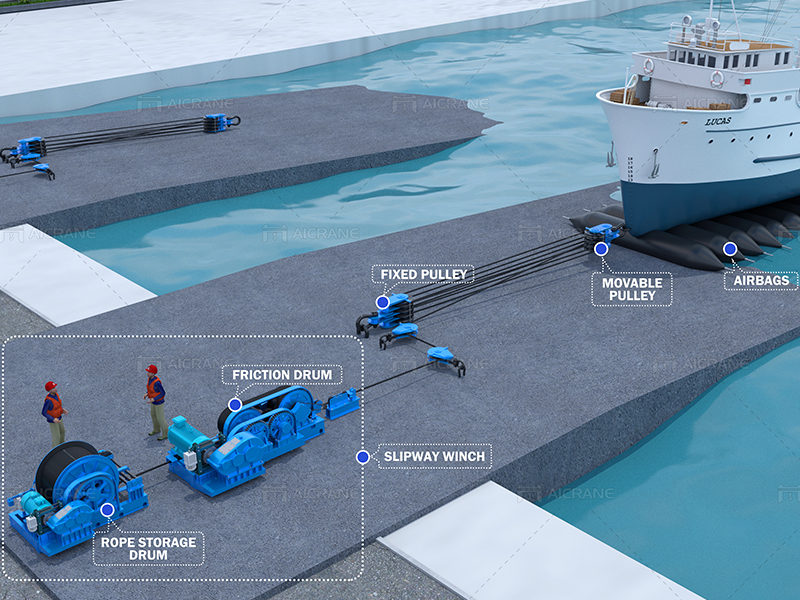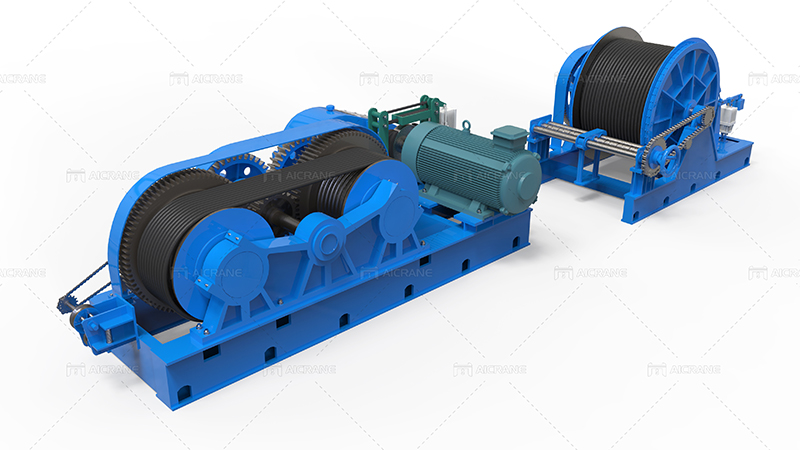As the maritime industry continues to evolve, with an increased focus on sustainability and environmental responsibility, it is essential to examine the environmental considerations in slipway winch designs. Slipway winches play a crucial role in launching and retrieving boats, and advancements in their designs have begun to incorporate eco-friendly features. This article explores the environmental impact of slipway winches and how modern designs are addressing sustainability concerns.

Power Sources and Energy Efficiency:
One of the primary environmental considerations in slipway winch designs is the choice of power source. Traditional winches often relied on hydraulic systems, which, while powerful, were not the most energy-efficient. Modern boat slipway winches increasingly utilize electric motors, offering improved energy efficiency and reduced carbon footprint. Electric winches can be powered by renewable energy sources, such as solar or wind, further minimizing their environmental impact.
Reduced Carbon Emissions:
The shift towards electric slipway winches contributes to the reduction of carbon emissions, a significant concern in the maritime sector. Electric motors generate power with fewer emissions compared to traditional hydraulic systems, making them a more environmentally friendly choice. As the maritime industry faces increasing pressure to lower its carbon footprint, the adoption of electric winches is a positive step towards achieving sustainability goals.
Corrosion-Resistant Materials for Longevity:
Environmental considerations extend beyond the operational phase of slipway winches. The materials used in their construction play a vital role in determining their environmental impact. Modern designs often incorporate corrosion-resistant materials, such as stainless steel or aluminum, which not only extend the lifespan of the winch but also reduce the need for frequent replacements and the associated environmental impact of manufacturing and disposal.
Energy Recovery Systems:
Some forward-thinking slipway winch designs integrate energy recovery systems to capture and reuse energy generated during specific operations. For example, when lowering a boat into the water, the winch can convert the braking energy into electricity, which can then be stored or utilized for other winch operations. This not only enhances energy efficiency but also minimizes the overall energy consumption of the winch system.
Efficient Load Management for Resource Conservation:
Efficient load management is a crucial aspect of slipway winch design that directly influences environmental impact. Modern winches incorporate advanced load monitoring systems that optimize the use of resources. By precisely controlling the tension and load on the winch cables, these systems reduce the risk of overloading, preventing unnecessary strain on the winch components and conserving energy in the process.
Sealing Mechanisms for Environmental Protection:
The harsh marine environment poses challenges not only to the winch’s functionality but also to its environmental impact. Modern slipway winches address this by incorporating advanced sealing mechanisms. These features not only protect the winch from water ingress, reducing the risk of corrosion, but also prevent the release of lubricants or contaminants into the surrounding water, contributing to the overall health of the marine ecosystem.

End-of-Life Considerations and Recycling:
Environmental responsibility extends to the end-of-life phase of slipway winches. Sustainable designs consider the recyclability of materials used in construction. By choosing materials that are easily recyclable, manufacturers can reduce the environmental impact of winch disposal. Additionally, responsible disposal practices, such as recycling or proper waste management, further contribute to minimizing the overall ecological footprint of slipway winches.
Adaptability for Eco-Friendly Practices:
Modern slipway winch designs are increasingly adaptable to eco-friendly practices within the maritime industry. For instance, some winches can be integrated into marinas or shipyards that implement green initiatives, such as capturing rainwater for use in heavy duty boat winch operations or utilizing renewable energy sources to power the winch motors.
Remote Control for Precision and Conservation:
The incorporation of remote control features in modern slipway winches not only enhances operational efficiency but also contributes to environmental conservation. Operators can precisely control the winch from a distance, minimizing unnecessary movements and optimizing energy use. This level of control is particularly valuable in environmentally sensitive areas where minimizing disturbance is critical.
Regulatory Compliance and Environmental Standards:
Environmental considerations in slipway winch designs are often guided by regulatory compliance and adherence to environmental standards. Manufacturers are increasingly conscious of international regulations and guidelines that aim to reduce the environmental impact of maritime operations. Compliant designs ensure that slipway winches meet or exceed environmental standards, promoting responsible and sustainable practices in the industry.
Conclusion:
The integration of environmental considerations into modern slipway winch designs marks a positive step towards sustainable maritime practices. From the choice of power sources to materials used in construction, from energy recovery systems to load management optimization, each aspect contributes to reducing the environmental impact of slipway winches. As the maritime industry continues to prioritize sustainability, these eco-friendly features will likely become standard in winch designs, ensuring a harmonious coexistence between maritime operations and the fragile ecosystems they operate in.